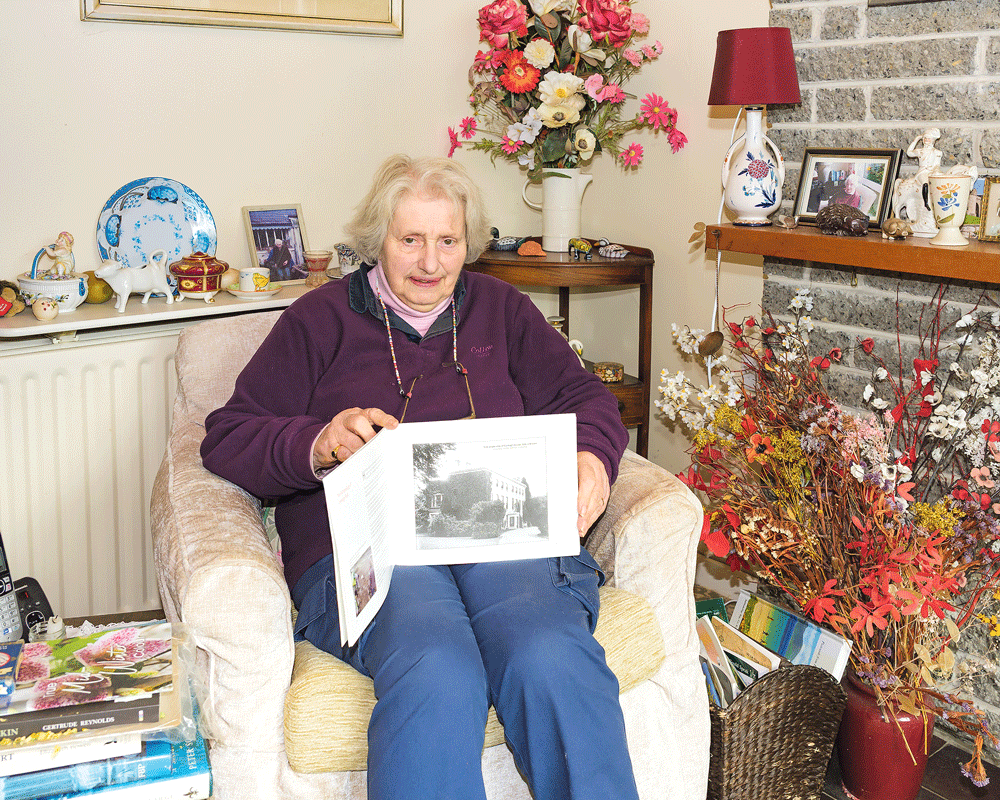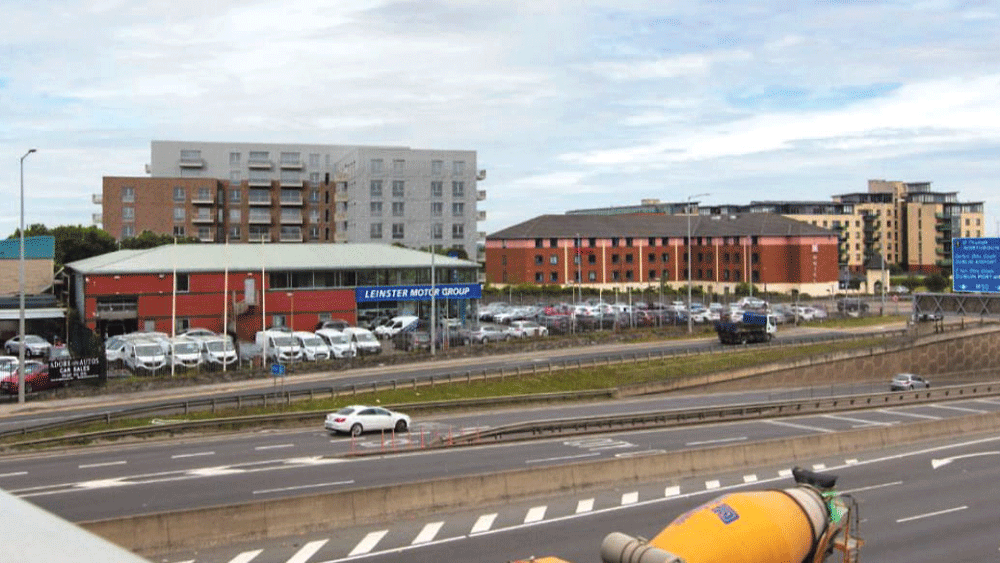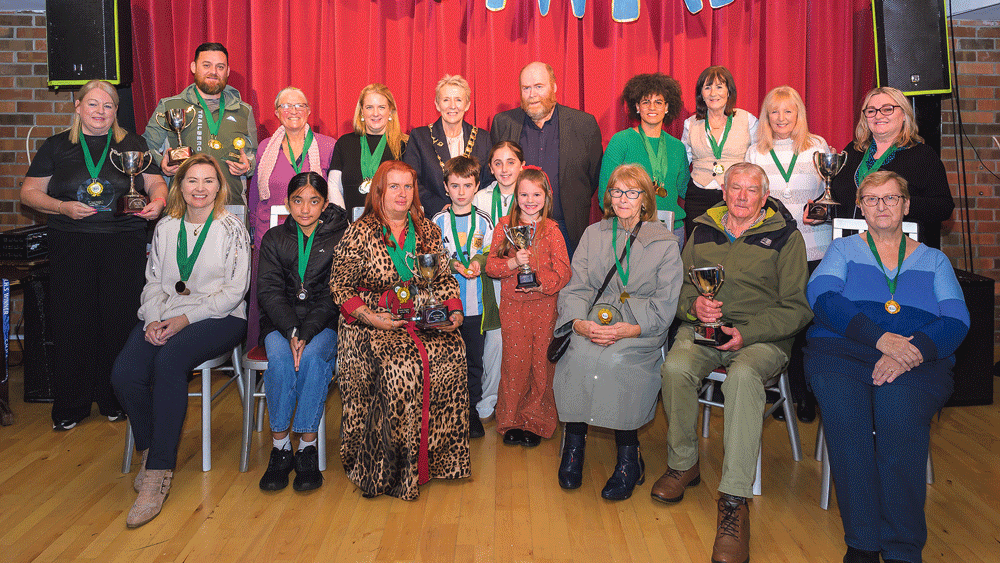

Local Faces: Laetitia Lefroy
CORKAGH House was an imposing 10-bedroom house located in the grounds of Corkagh Demesne until its demise in the early 1960s, writes Ken Doyle.
The house, or rather, a house on the site, was first referred to in 1324 as the residence of Alexander de Bicknor, Archbishop of Dublin.
Corkagh House, as it became, was a small farmhouse built around 1650.
Over the subsequent years, the house was expanded upon and improved to the extent that in the early 1700s, it was described as having eight bays, a parapeted roof and a walled garden containing orchards and fruit trees.
For the local historians amongst our readership, there is plenty of reference material available on the house, and I would particularly recommend Turtle Bunbury’s exceptionally thorough tome, published through South Dublin County Council.
Much as I would love to wax lyrical about this gem of Clondalkin history for a thousand words, that’s not what we’re here for. Our feature is called ‘Faces of the Community’ and we’re lucky enough to meet this week, a lady who actually once called Corkagh House home, Laetitia Lefroy.
Laetitia is now enjoying a happy retirement and was generous enough to share her memories of Corkagh and beyond with The Echo recently.
I must admit that I was a little worried about our conversation before it happened. As you may know, I’m a proud North Clondalkin gurrier with holes in my knee patches and I considered Laeticia to be the Clondalkin landed gentry.
I needn’t have worried though, the lady is a wonderful conversationalist and was generous as could be with her time and memories.
“I must say,” she tells me early on, “that when I lived in Corkagh, it was quite shabby really and was far from the palace you might imagine it was. And of course, as children, we didn’t think about it too much. It was just where we lived and we didn’t really think there was anything particularly special about it.”

Worked in adoption services
“Another thing I remember vividly is that the house was always full of people. We had visitors constantly, some related, some not and the house entertained many, many people in the years I was there.”
Laetitia (a name meaning gladness in Latin), was the daughter of Veronica Colley and Pat Lefroy and grew up with her only sibling, brother Jeffry. She recalls with great fondness her maternal grandmother Edie, who was the unquestioned matriarch of the entire Corkagh pile.
“My grandmother was an extraordinary woman and I loved her dearly,” Laetitia tells me. “She was not particularly domesticated, as I recall, but she was a wonderful gardener and I like to think some of that enthusiasm rubbed off on me – I’m a very keen gardener to this day.”
Of her early years, Laetitia says, “Well, my father was a military man who had enlisted before the Second World War and met and married my mother before hostilities began.
‘Jeffry and I were born before the war and in ’39, my father duly went out into action.
‘He was away for eight years and when he came back, he and my mother really didn’t know each other. It was sad and they did their best but eventually they did get divorced.”
Education was a strange matter for the Lefroy children. Jeffry had gone to boarding school and took to it well enough. Laetitia was a different matter entirely and didn’t take to school at all.
“I remember for some reason my mother enrolled me in a place in Donnybrook and we had an enormous trek by bus and foot every day to get there.
‘I really didn’t enjoy it at all, although it was brightened up somewhat one day when an unfortunate incident befell one boy in school.
‘He had somehow found a way to lose the eye from his adored teddy bear up his nose and required hospital treatment.
‘Other than that day of fun, there was really nothing I enjoyed and, in all honesty, I was really a late bloomer when it came to reading and writing.”
Early bad experiences including an unhappy year at boarding school.
Notwithstanding, in her teens, Laetitia matriculated her way into Trinity to study Botany and Zoology.
After a year she decided it wasn’t for her and she moved into Social Sciences where she achieved a diploma (she would later get her degree from Birmingham University).
Upon leaving Trinity, one might think the employment world would have been Laetitia’s oyster but sadly that was not the case.
Being a lady who kicked with her left, she found it difficult to get work in the area she wanted to work in, mostly because the Catholic church ran most of the relevant institutions.
“I did have some placements early on, one in Enniskillen up north stands out, but I really had to go over the water for any real opportunities.”
“Soon after I landed in England I found a resident position in Bristol dealing with boys from 4 to 17 years old.
‘These kids were from all manner of backgrounds and presented with many behavioural and developmental issues.
‘It was tough but looking back, I couldn’t have had a better grounding in Social Work. I left there after a couple of years with a greatly expanded skillset.”
“I worked a lot with young people who were involved in gangs and subsequently learned quite a lot about what you might call the criminal underworld.
‘I also dealt with the parents of these boys and a couple of times, to my great consternation I was left to run the place on my own for a weekend.”
Presently Laetitia came to a 12-year stint in Aylesbury, Buckinghamshire and in her own words did “everything there was to be done in Social Work.”
Soon however, home came calling, partly due to the sainted Edie’s failing health and Laetitia decided to come back.
The family by then had decamped to the smaller but no less charming Kilmatead House on the Corkagh Estate and things had opened up somewhat for Laetitia on the employment front.
“I actually took a position with Barnardo’s and when they opened their Dublin office in Harold’s Cross, that was my working home for the rest of my career.
‘I had a hand in a great many initiatives set up by the organisation and I met so many wonderful people. It was a management role but it was no less demanding and engrossing than anything I’d experienced before.”
There is one aspect of Laetitia’s work which really should be mentioned strongly and that’s her work in Adoption Services.
She was Chairperson of Children First and then became known for her work in encouraging and acknowledging the rights of the adopted.

Dealt with young people involved in gangs
In 1977 she started a phone-in information service and attempted to break down the mystery and obfuscation of the process, especially in Ireland where children born to unwed mothers was a huge issue in the 50s and 60s.
“There still was a stigma then about adoption and I fervently believed that attitudes needed to change.
‘I’d like to think I helped a lot of children and parents over the years and I’m glad to see that the stigma has disappeared generally and that the good work I was involved with has carried on.”
“I actually wrote a book about my experiences called ‘New Families’, with author Charles Mullen, which is probably difficult to get now.”
Eventually, in the aftermath of a serious car crash, Laetitia retired.
The crash still haunts her now as she suffers continuous pain which has to be managed carefully.
Not that it’s stopped her from doing anything, she still drives and considers it one of the great pleasures of her life.
It also makes life so much easier as she can meet friends and go shopping whenever the mood takes her.
When it comes to media appearances, this is a long way from Laetitia’s first rodeo. If you Google her you can find all manner of interviews, podcasts, TV appearances and I’d recommend that you do.
She speaks with clarity and no little charm about one of the most important buildings and estates of our little catchment area, and many other things besides.
Laetitia now calls Dundrum home and she’s happy as can be pottering around in her “colourful if untidy” garden and pootling around in the old jalopy.
“I’m a good driver and I’m a safe driver,” she tells me pointedly as if I had any doubt.
‘Of course I didn’t and with that, our thoroughly entertaining chat comes to an end. It’s just occurred to me, we both grew up on estates, so we have a bit more in common after all.





